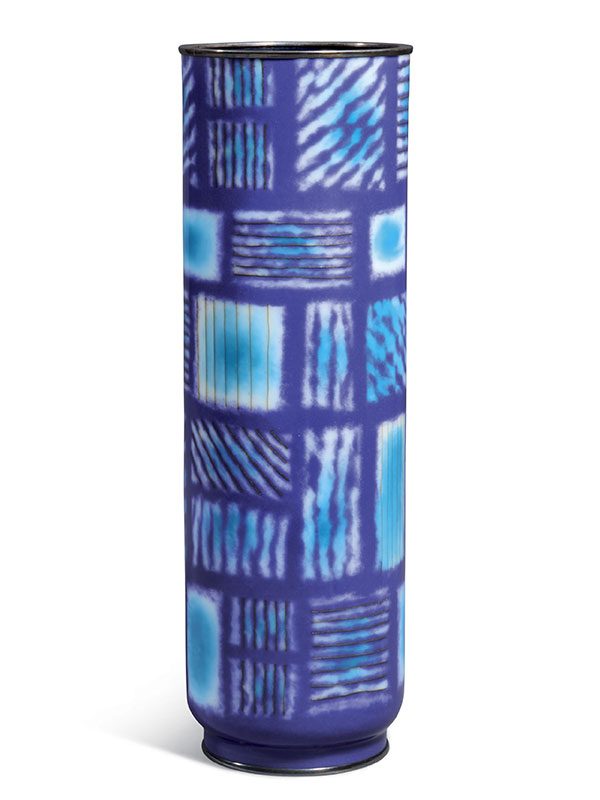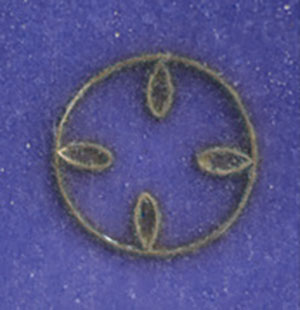Cloisonné enamel vase by Ando Jubei
Japan, Showa period, 1926 – 1989
A cloisonné enamel vase of cylindrical shape, supported on a small foot, the sides tapering outwards towards the top rim. The exterior of the vase is decorated with a pattern of squares in light blue on a dark blue ground, each composed of parallel or diagonal lines and alternating with squares containing a circle of blue enamel on a white ground. The rims at the top and at the bottom are bound in plain silver bands. The base bears the mark of Ando Jubei. The vase
is contained within a wooden box.
Ando Jubei was a very successful and prolific Meiji and Showa period cloisonné artist from Nagoya, who dominated the local enamelling industry and lived from 1876 – 1953. He took part in the Japan-Britain exhibition of 1910 where he exhibited examples of his work. The cloisonné worker and designer Akita Takayuki together with Ando Jubei developed the technique of applying alumite, an alloy of obsidian, iron and aluminium, to cloisonné, thus creating a warmer feel to the material. They registered this technique as a patent in Showa 12 (1937).
昭和时代/安藤重兵卫制珐琅花瓶
此瓶呈直筒形,小圈足,口沿及圈足为银质。表面以白色为地,其上由蓝色与蓝紫色线条及斑块表现编织纹。圈足内有作者签名。安藤重兵卫(1876-1953)为明治至昭和时代具有代表性的日本珐琅领军艺人,生于名古屋珐琅世家,其家族曾一度近乎垄断日本珐琅产业。安藤发明了将黑曜石与铁铝合金运用于珐琅器之上的技术,并于1937年将此项技术注册为专利。得益于此项技术,其作品表面质感温润细腻。其作品曾参展1910年的英日艺术联展。


